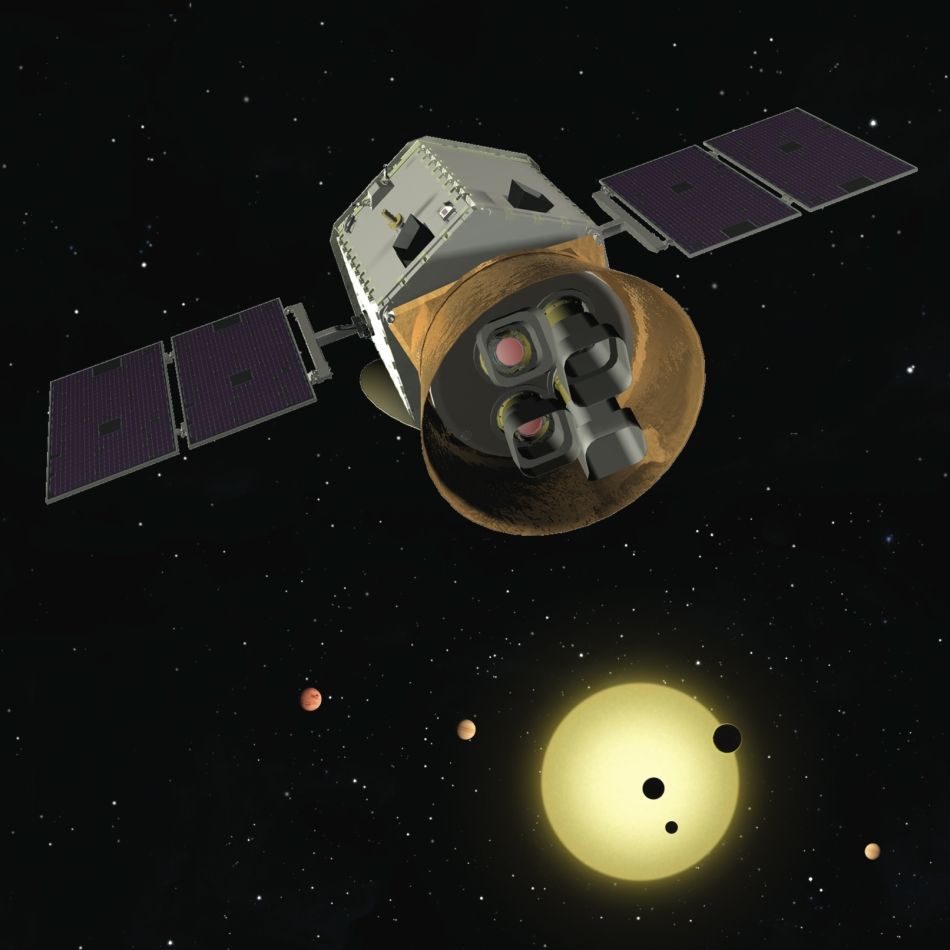Transiting Exoplanet Survey Satellite (TESS)
Launch Date:
April 2018
WEBSITE:
TESS is an Explorer mission that was selected for development in 2013. Launched on April 18, 2018, TESS will conduct a two-year survey searching ~200,000 bright (V=4-12), nearby stars for transiting exoplanets, including the 1,000 closest red dwarfs similar to our Sun. The survey will focus on G- and K- type stars with apparent magnitudes brighter than 12. Simulations of the TESS mission predict that TESS will find thousands of new exoplanets, including hundreds of small exoplanets, and even a few (~5) rocky planets in the habitable zones of their host stars. With the time-ordered photometric data for these targets, TESS will provide the target list for future follow-up observations of transiting exoplanets. Because the host stars are bright and nearby, they will be ideal for ground-based observations and well suited to transit spectroscopy with JWST.
In addition, the full-frame images acquired every 30 minutes will provide a nearly complete sky survey, allowing for detailed study of ~2 million stars in our galactic neighborhood. From these data, TESS will discover over 10,000 additional exoplanets (largely Jupiter-sized objects), which will help improve the statistical knowledge of the population of exoplanets. The full-frame images will also provide unique new data for a wide range of non-exoplanet science including studies of white dwarfs, active galactic nuclei, and young stars. Much of this work will be supported through the TESS Guest Investigator Program.
TESS will be equipped with four wide-angle telescopes and charge-coupled device (CCD) detectors, with a total size of 192 megapixels. Together, these four cameras provide an instantaneous field-of-view of 24x96 degrees; over the course of the nominal two year mission, each of these observing sectors will be observed continuously for 27 days. Where observation sectors overlap, the time coverage will be longer, up to a full year at the ecliptic poles. Data from TESS will be sent to the ground monthly, and will be available to the public quickly, with no proprietary data period.
The Principal Investigator for TESS is Dr. G. Ricker at MIT, and TESS is being built in collaboration between MIT, Orbital, NASA Goddard, and NASA Ames. The TESS Science Team has international membership, and is led out of MIT and the Smithsonian Astrophysical Observatory.
Key Staff
- Project Scientist: Allison Youngblood
- Deputy Project Scientist: Susan Neff

